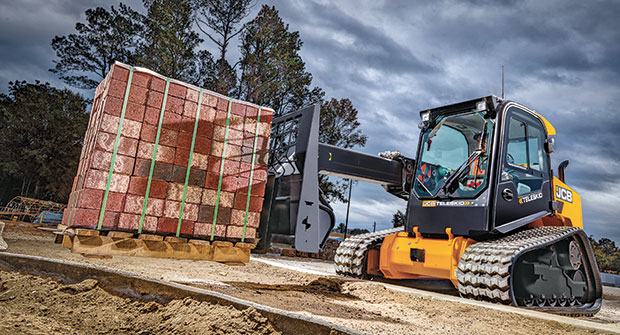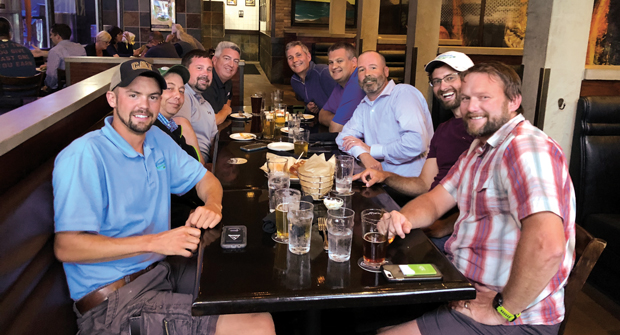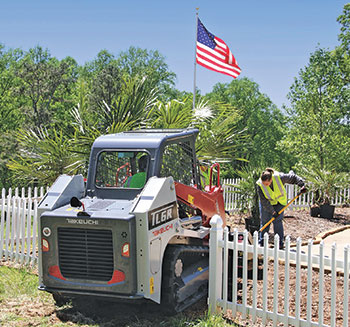
From extreme weather conditions to varying tasks, track loaders and their attachments are up for the job.
When it comes to what makes track loaders versatile pieces of equipment, Lee Padgett, product manager at Takeuchi-US, says there are many contributing factors.
“Track machines are better suited for multiterrain use and have lower ground pressure, reducing the amount of disturbance to the job site,” Padgett says.
Due to their base, track loaders are more stable than machines with wheels, and operators can use them in most conditions — including mud, ice and snow, says Chris Trampush, product manager for skid-steer loaders and compact track loaders at JCB North America.
“They’re also great for construction worksites,” Trampush says. “You don’t have to worry about puncturing a tire. They pretty much can go anywhere you need to.”
Year-round use
Being able to use track loaders throughout the year adds to their value as well, allowing owners to look for more areas where they can use their machines.
“As the seasons change, new opportunities emerge, and the proactive contractor can capture these by keeping his machine producing year-round,” Padgett says. “Where dirt work and grading may be a summertime focus, wintertime may bring additional opportunities like snow removal.”
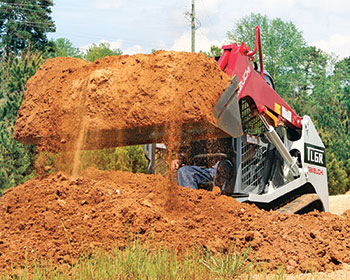
Helping to extend the machine’s use throughout the year is the track loader’s ability to balance torque with tractive efforts, thanks to more ground-to-surface contact, says Jason Boerger, marketing manager, Bobcat Co. The tracks also distribute the weight, reducing ground disturbance.
To get the most from the machine, it’s important for operators to pair them with the right attachments for each job.
“You wouldn’t need multiple machines or to hire multiple operators,” Trampush says. “You can just add more attachments.”
The versatility and capabilities of track loaders and their attachments are especially helpful with the industry’s labor shortage.
“As the labor force tightens, contractors can take advantage of the many different types of hydraulic attachments available now for compact track loaders,” Padgett says. “The work that used to take a crew of people can now be done with one or two guys, saving time and labor cost as well.”
Track loaders are offered in standard- and high-flow auxiliary configurations, Padgett says, which make them good platforms for use with a wide variety of hydraulic attachments.
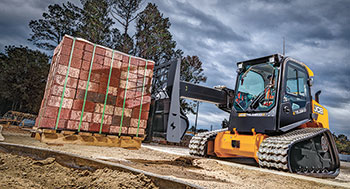
Popular attachments include buckets to move materials, mulchers for clearing, sweepers to clean streets, grapples for debris removal and pallet forks to load/unload materials, Trampush says. The specific tasks and jobs will determine the best type of attachment, and most manufacturers offer dozens of them from which to choose.
Stay on track
Daily checks and proactive maintenance are vital to reduce downtime and keep these machines running at peak level. While track loaders can tackle muddy conditions better than their wheeled counterparts, those environments can cause mud and other debris to build up in the undercarriage.
“Clean the undercarriage out, especially in cold environments where it can freeze up and cause problems, like track slippage,” Trampush says.
It’s also important for operators to use track loaders in the right applications and understand how to maneuver them on job sites. For example, if there’s concrete or cement work on a site, Trampush says operators need to be careful traveling across it, especially with making turns.
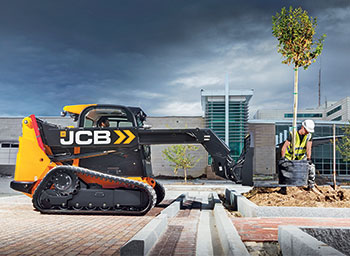
“If you have to turn, make a wide turn or a three-point turn to save your life expectancy on the tracks,” Trampush says. Whether on a construction site or landscape, track loaders have shown they can leave a small footprint while also making a big impact on what contractors can accomplish with them and their attachments.
“There are lots of opportunities that used to go to their larger counterparts that can now be done more efficiently and cheaper with today’s track loaders,” Padgett says.
Read more: Experts’ Tips: Selecting the right attachments for skid-steers
